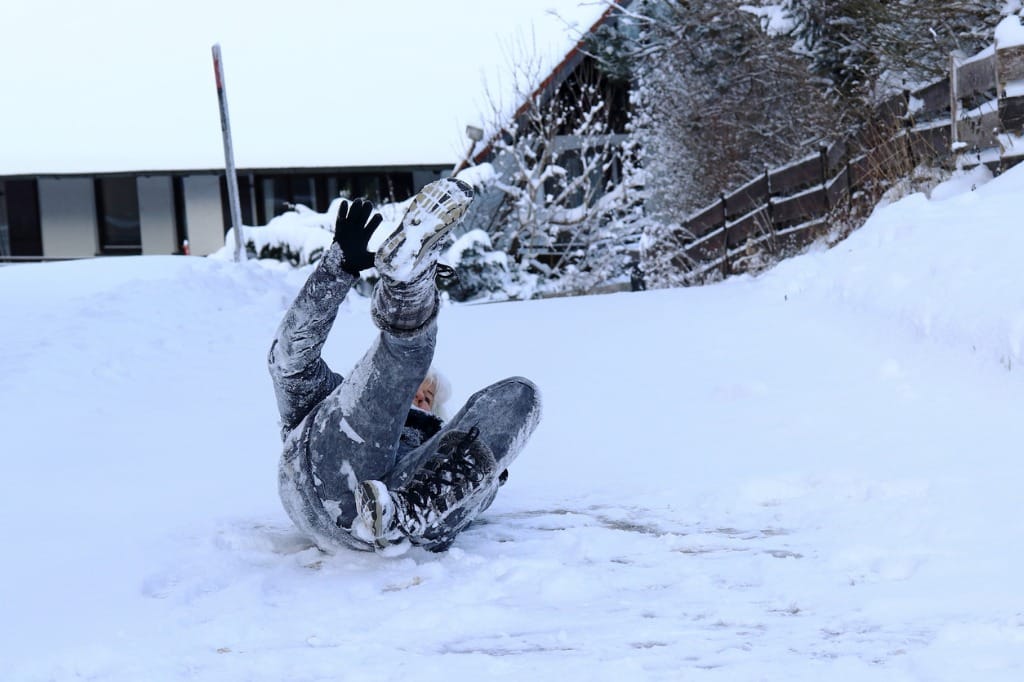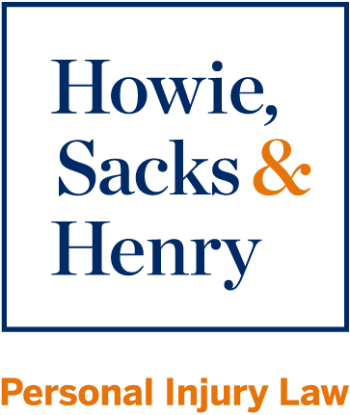
Picture this: it’s a cold winter day and you’re walking along an icy path on your way to the bus stop, mailbox, grocery store or to pick up your child from school. All of a sudden – boom! You find yourself on the pavement with feelings of intense pain and confusion as to what just happened.
What is a Slip and Fall?
Slip and falls are fairly common occurrences. Whether they are due to a snowy or icy walkway, slippery surfaces or debris, people unexpectedly fall for many reasons.
If it can be determined that the fall was due to the negligence of another, you may be eligible to sue for compensation for any injuries you sustained as a result of your accident. Typically, one would sue the owner, property manager, maintenance workers or whomever is responsible for the property where they fell—whether it is inside or outside of a store, office building, hospital, school or even a parking lot.
What You Need to Prove
If you are planning to sue for your injuries, you must prove that: 1) you suffered an injury due to a slip and fall on the premises; 2) the owner, occupiers, property manager, maintenance workers or the other people/organization(s) that were responsible for the premises were negligent with their actions or failure to act. You would also have to show that your injuries were specifically caused by their negligence.
The legislation that governs slip and falls in Ontario is the Occupiers’ Liability Act, which at section 3(1), states the following:
An occupier of premises owes a duty to take such care as in all the circumstances of the case is reasonable to see that persons entering on the premises, and the property brought on the premises by those persons are reasonably safe while on the premises.
Accordingly, if you fell and were injured as a result of a lack of maintenance by a property owner, occupier or his/her/their agents or employees, you may sue them for failing to uphold their duty of care. However, the law provides exceptions in certain cases where the injured person was engaging in criminal activity, trespassing, or even a recreational activity.
Of course, Ontario’s Negligence Act can also play a part in your lawsuit too. Specifically, the Court may determine that fault should be divided between you and the other responsible parties, depending on the circumstances and your actions.
Limitation Period
The general rule is that a lawsuit for a slip and fall injury – like many other personal injury claims – must be started within two years of the date of the accident. But, it is very important to keep the following in mind:
1) if you suffered an injury on private property (e.g. a grocery store’s parking lot) due to snow or ice, you must provide notice to at least one of the responsible parties (e.g. occupiers of the premises or independent contractors employed by the occupier(s)) with details regarding the time, date and location of the fall within 60 days of the accident. Otherwise, you may have your lawsuit dismissed by the Court.
2) if you suffered an injury on property that is owned by a municipality (e.g. a sidewalk) due to snow or ice, you must notify (i.e. provide notice to) the clerk of the municipality of your intention to sue within 10 days of the accident. Otherwise, you may have your lawsuit dismissed by the Court.
Though your lawsuit may seem straightforward, unfortunately, this is seldom the case when it comes to slip and falls. Having a trusted and skilled lawyer on your side can help navigate the inevitable challenges along the way.





